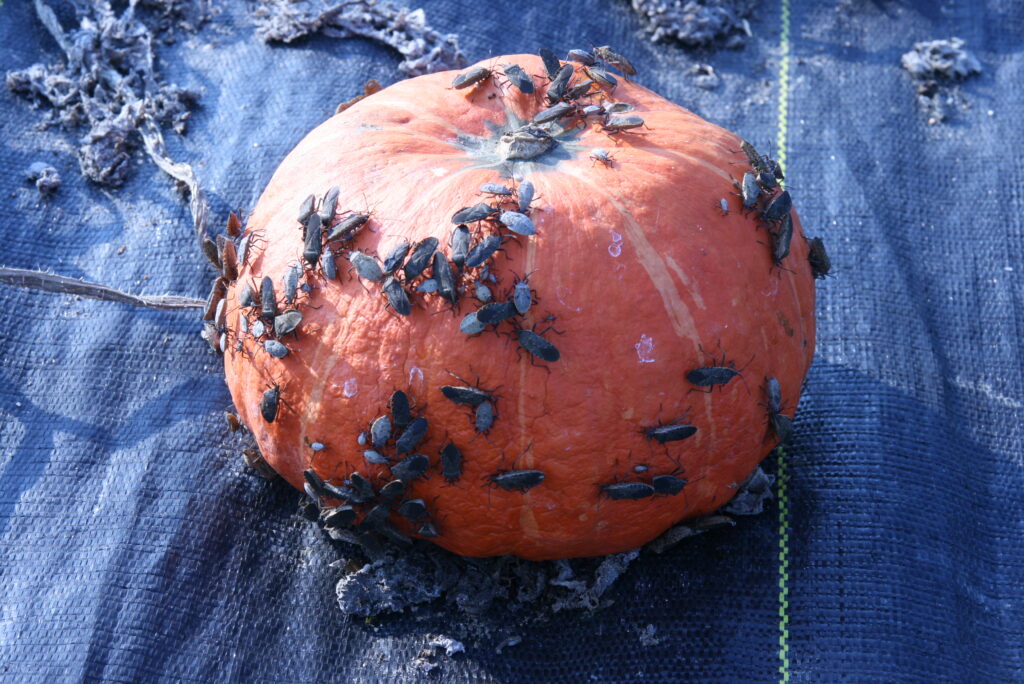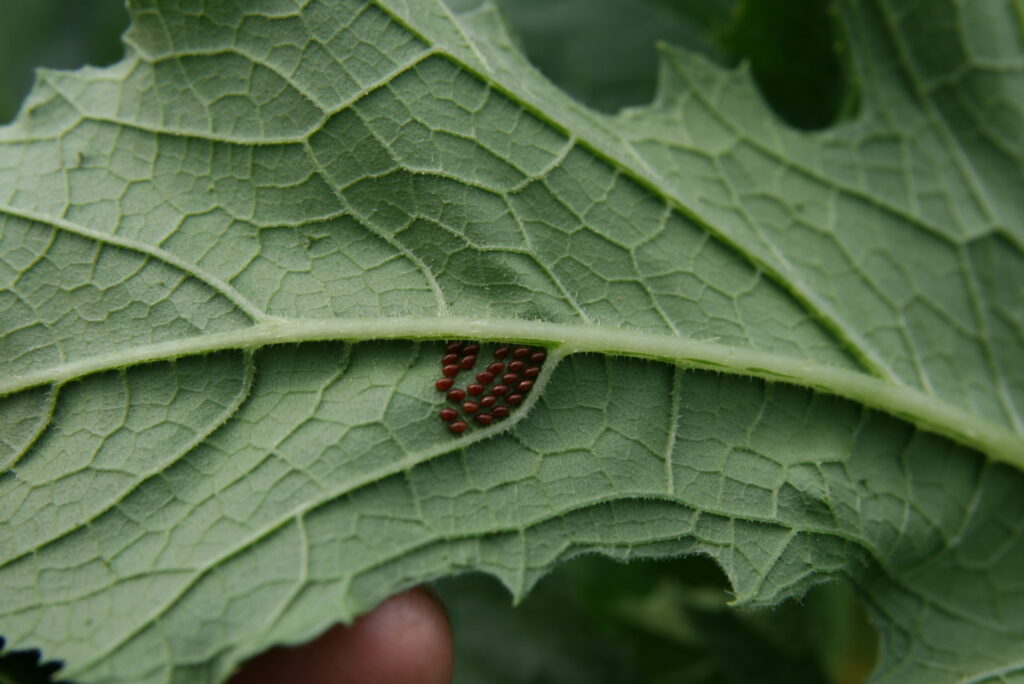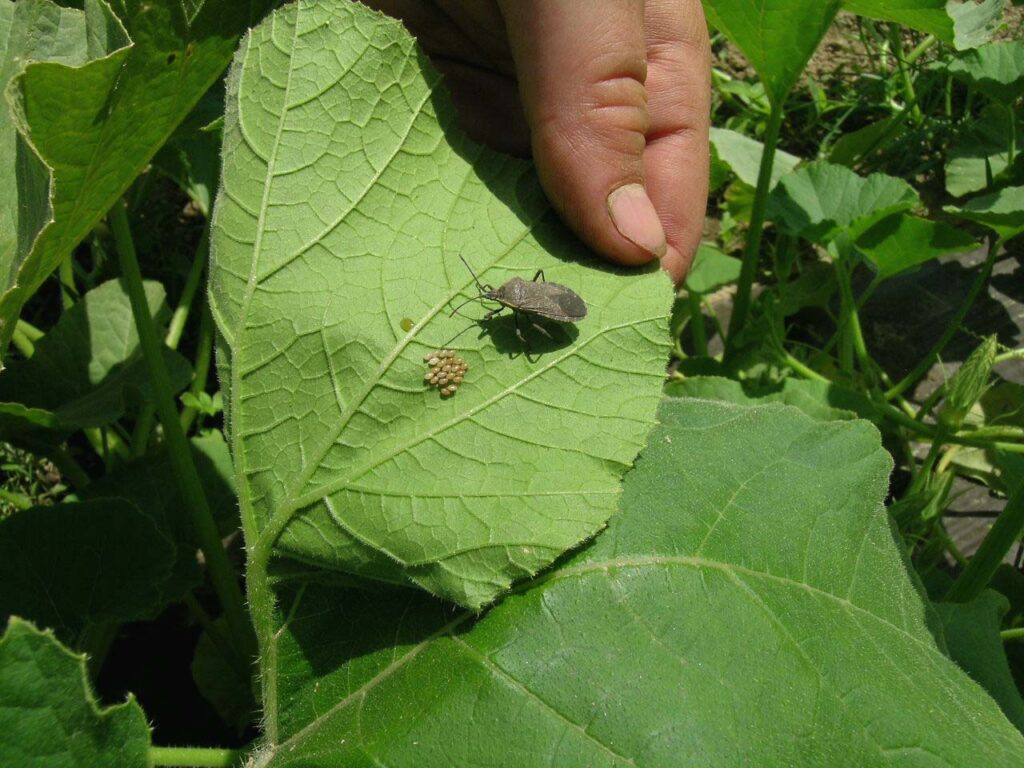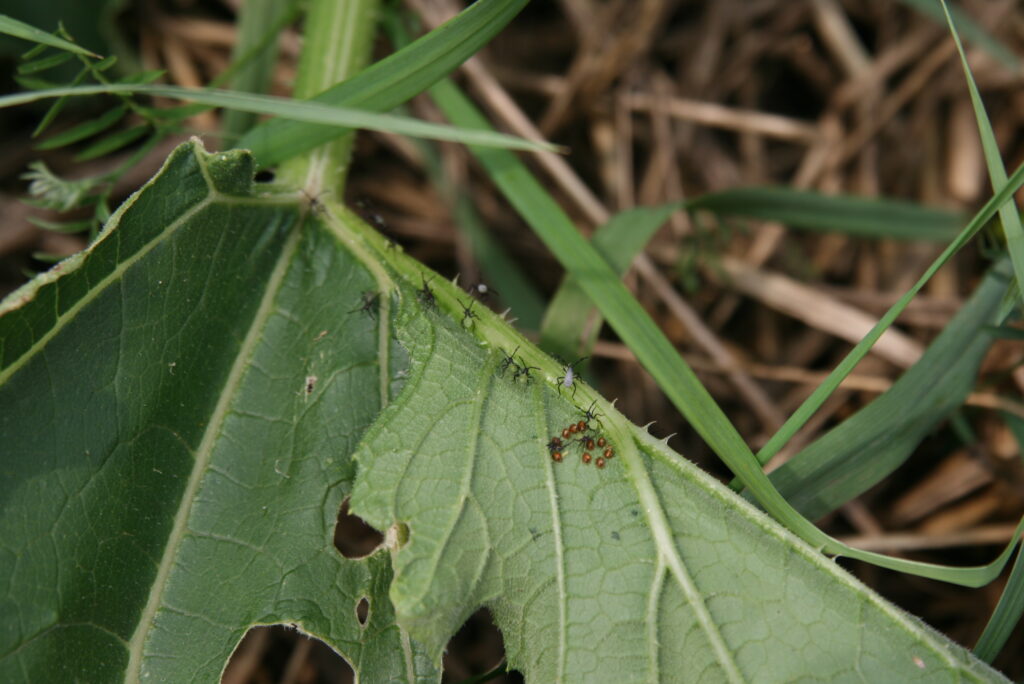
Pest: Squash Bug (Anasa tristis)
Pest identification and lifecycle, most common symptoms and crops affected:
Squash bugs are serious pests of pumpkins and squash throughout North America. Plant damage, and bug survival, are low on watermelon, very low on cucumber and muskmelon, and highest on squash and pumpkin. Both adults and nymphs feed by inserting their beak and sucking juices from plant tissue. Toxic saliva injected during feeding causes foliage to wilt, then leaves turn black and die; the severity of this damage is directly related to density of squash bugs on each plant. This “anasa wilt” can resemble a disease, like bacterial wilt (which is transmitted by cucumber beetles). Later in the season, squash bugs may feed on the fruit, causing them to collapse or become unmarketable.

Adults are 0.5 to 0.75 of an inch long, flattened and grayish-brown. They hibernate in trash in and around the garden for the winter and emerge in the early summer to feed a bit and lay eggs. Eggs are laid in clusters usually on the underside of leaves and are orange when first laid, but turn bronze-colored before they hatch. The wingless nymphs are similar in appearance to adults, and are whitish when small, with a brown head, and grayish white when larger with black legs. There is one generation per year in the Northeast.

Management options:
Cultural:
Black plastic, weed barrier fabric, straw mulch, and reduced tillage systems encourage higher populations, probably by providing good hiding places. Squash bug numbers are reduced by clean cultivation in the fall, crop debris removal/incorporation and crop rotation. Infestation is delayed by row covers. If possible, rotate cucurbit crops between fields as far apart as possible. Keep headlands mowed and free of trash to reduce overwintering sites.
Pesticides approved for use in certified organic production (as a last resort):
Squash bugs are unusually difficult to control with insecticides. Scout undersides of leaves for squash bug adults and eggs. Crush the eggs. You may not want to crush the bugs as they stink when you do. Some growers report success removing eggs with duct tape wrapped around their hand, sticky side out.

If you miss some eggs and have to spray, try to time squash bug sprays to kill young nymphs just after they hatch, because this stage is the easiest to control. Treat late in the day when the flowers are closed to reduce risk to bees. Neem and pyrethrin products, or a combination of the two, have proved effective.

For adult bug control, pyrethrin applied to the base of the plant is probably the most effective, possibly because bugs tend to cluster. But, squash bugs are virtually impossible to control later in the season when nymphs are large and the canopy is dense.
Please note: This information is for educational purposes. Any reference to commercial products, trade or brand names is for information only, and no endorsement or approval is intended. Pesticide registration status, approval for use in organic production and other aspects of labeling may change after the date of this writing. It is always best practice to check on a pesticide’s registration status with your state’s board of pesticide control, and for certified organic commercial producers to update their certification specialist if they are planning to use a material that is not already listed on their organic system plan. The use of any pesticide material, even those approved for use in organic production, carries risk — be sure to read and follow all label instructions. The label is the law. Pesticides labeled for home garden use are often not allowed for use in commercial production unless stated as such on the label.
Source material attribution: New England Vegetable Management Guide; Handbook of Vegetable Pests, A Capinera; ATTRA; and UMass Extension article by Andy Cavanagh and R. Hazzard.
